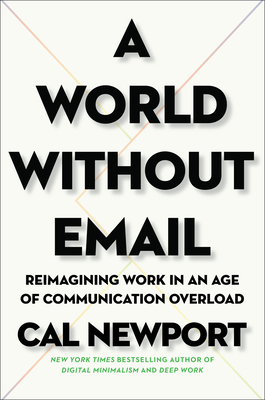A World Without Email by Cal Newport presents itself as a guide to overcoming the challenges of email overload and revolutionizing workplace communication.
However, the problem with the book is that it’s overloaded with random suggestions, without real, viable alternatives. The author lost me when he quotes extensively from known “hacks” (and I don’t mean this in a positive way) like Tim Ferriss.
The book also suffers from being annoyingly chaotic and imprecise, attempting to mix various concepts without delving deep enough into any of them.
Newport’s main premise is that the problem lies not with email itself but with what he terms the “hyperactive hive mind”, a way of managing and coordinating work primarily through email communication within organizations. Unfortunately, he lumps all forms of communicators, including message-based ones, into this category, creating utter chaos and confusion.
The author’s criticism of email begins in a completely ridiculous manner, pitting the blame on individuals using this asynchronous communication method synchronously due to their immediate response tendencies. In reality, this issue stems from organizational culture and misguided expectations, rather than the inherent nature of email as a tool.
To truly assess email, one must properly classify and understand its features, such as its asynchronous, written, and persistent nature, as well as its ability to reach multiple recipients easily. The author fails to grasp these distinctions, neglecting to explore the advantages and limitations of email comprehensively.
The book takes an even more absurd turn when the author admits to struggling with proposing a better alternative to email when asked by the publisher. His initial suggestion of Trello raises eyebrows and undermines his credibility.
From there, Newport compulsively jumps between topics, mixing Theory of Constraints, flow-related concepts, Scrum, Extreme Programming, status meetings, office hours, and more. There is little focus on communication itself, with an excessive emphasis on orchestration rather than understanding the intricacies of effective communication.
Furthermore, A World Without Email completely disregards the significant impact of the pandemic, which has dramatically changed the world since 2019. The book’s highly praised solutions to email alternatives, such as collocation or direct visits, fail to address the realities of remote work and virtual collaboration that have become commonplace in recent times.
To clarify, I am not an email aficionado myself and rely on alternative communication methods even in my work. However, my concern is that email is just one option among many in our communication toolkit. It has its specific uses and drawbacks, and understanding it deeply is crucial for effective implementation. Unfortunately, this book falls short in providing the necessary insights and practical guidance to navigate the complexities of email usage.


